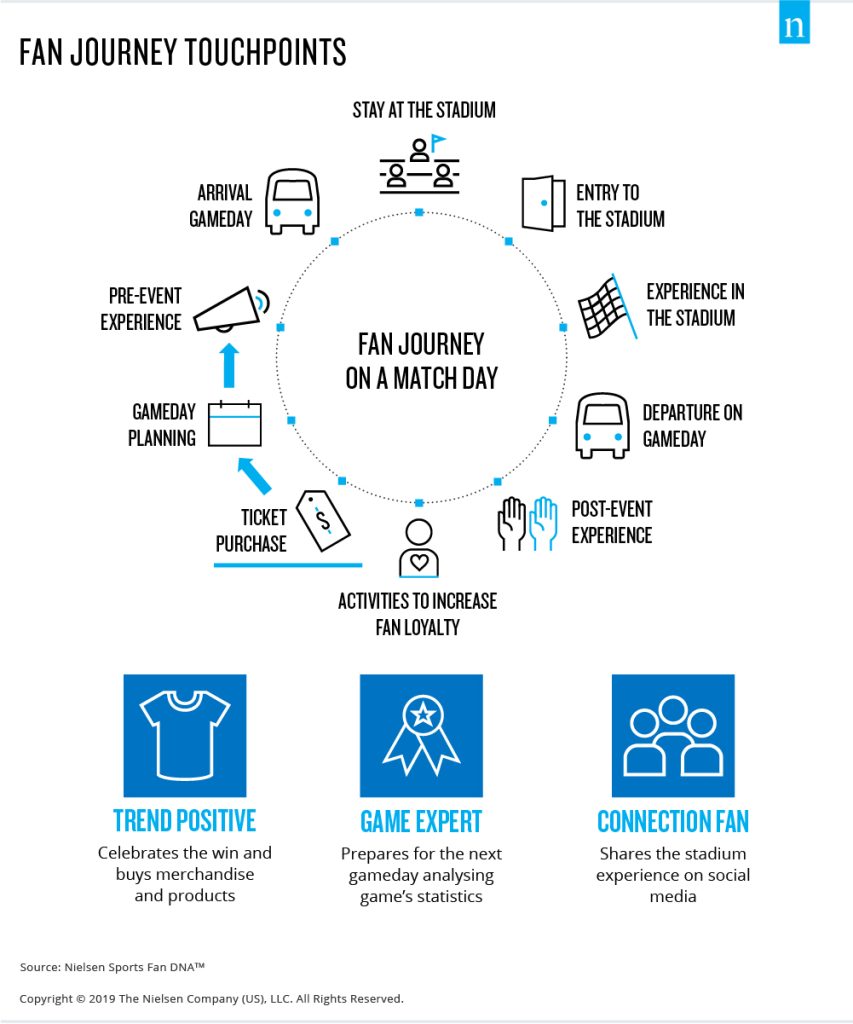Covid-19 has irreversibly changed the world. When it looked like crowds might never return to sports stadiums, businesses started innovating.
Stadiums are working to change the sports experience permanently. Smart stadiums will use hundreds of HD cameras and increased screens everywhere to help fans navigate to their seats and find their way to the food stands.
Drone technology can bring drinks and food right up to the customers. Holograms can bring the players right into our homes, while smartphone apps will allow for a whole new level of engagement and tracking.
This article will look at how stadiums adopt technology to survive and thrive in a post-covid-19 world.
Contents
1. The no-contact stadium experience
While governments everywhere were forced to shut down stadiums to protect the public, many yearned for the shared stadium experience. Sports fans crave being close to the action. Being surrounded on all sides by fans is an experience everyone has to experience at least once. People still want to attend games from stadiums, but businesses cannot ignore the risks of having people in physical contact with each other because of the risk of infection.
Before the pandemic, we might have needed to present a ticket at the entrance before we could enter. Soon, we will be able to enjoy a completely non-contact stadium experience. Digital tickets can remove the need for physical tickets and facial recognition software to verify the identity of customers in stadiums. Barcode scanners installed at the entry point can allow you to enter with a simple wave of your smartphone, making the entire stadium entrance process as automatic as possible.
But it’s not just the outside of the stadium that is getting automated.
The inside of the stadium is seeing a turn for the future. With several giant screens being installed in stadiums, fans can now be directed to the seats and food stands with the help of interactive displays and markers.
Not only does the stadium guide us to where we want to go, but they can also communicate with us personally through our smartphone. Tracking technology on our phone can allow stadiums to see where we are and guide us to key points of interest. Not only does this help optimize fan engagement, but it can also serve as a means to conduct contact tracing on thousands of people at once. The additional screens in the stadiums can be used for advertisements, bringing in additional revenue streams for stadium owners. We might go to the food stand, only to find it being manned by drones to reduce physical contact further.
2. The home stadium experience
While the above may sound impressive, there are fans that want a simpler, more economical stadium experience. There are fans that prefer sitting at home and watching the game alongside a couple of friends with drinks in hand.
Businesses haven’t ignored this home audience. They might have put screens in stadiums 20 years ago, but today, businesses are bringing the stadium to our home instead. This is being done with the help of virtual reality and augmented reality technology.
Stadiums can make use of new cameras in their stadiums to broadcast the players right into people’s homes with the help of hologram technology. The stadium scoreboard can be brought right into our smartphone screen, giving us constant updates of the game. We can use our phone to watch different angles of the players who will, in turn, wear smart clothing on the pitch that tracks information such as pulse, speed, and performance.
Does hologram technology sound too futuristic and unbelievable? Too bad because it’s already here.
3. The stadium of the future
For the 2022 World Cup, Japan has promised to record all of its games in high resolution with the help of 200 cameras covering almost every inch of their stadiums. These cameras will send out 3D models of the players to stadiums worldwide at the same time in the form of holographic projections.
These stadiums have microphones embedded right below the pitch to catch all the sounds of the players and the ball being kicked. We can hear the crunch of a bone as a player tackles another player on the ground and feel immersed in the sense of realism, unlike any other stadium experience we’ve had before.
While players run on their pitch, the stands will be empty to comply with government regulations because of covid-19. So a lot of effort is being put in to motivate the players to play in this situation with the help of ChampTrax and HearMeCheer.
These are the bluetooth-based technologies that make it possible for fans sitting at home, and watching the game, to cheer their hearts out and transmit their cheers to a central server with the help of their smartphones. These sounds, gathered from every fan sitting at home, are combined into one unified audio track and blasted out on the speakers in the stadiums to breathe life into a seemingly empty stadium.
Not only are the players being sent to our home with the help of holographic technology, but the cheers of people watching at home are also being sent into the stadium with the help of nothing more than the microphone on our mobile and an app that we’ll have to download.
4. Changing the experience
Businesses have made great efforts to increase fan engagement for the audience at their homes and in the stadium. But there are still gaps in the overall experience that is being filled with additional technologies.
For instance, there are fans that might need a washroom break but don’t want to miss the action. Smartphone apps are being used in this case to connect with the stadium Wi-Fi to provide live updates on our phones wherever we go.
Then there are fans seated too far from the action. They can use the screens in the stadium or connect to the stadium with their smartphone instead to get live, interactive graphics of the game. Fans can receive constant updates on specific data points such as player metrics, rankings, gossip, and other performance metrics. We can use these apps at home even if we don’t attend the match at the stadium to enhance our at home experience.
5. The rise of smart stadiums
With technology improving fan engagement at the stadium and at home audiences, development and adoption of these technologies has become a race.
Fans expect extreme levels of digital connectedness and convenience that is not easy to deliver. While everyone feared the death of the sports experience because of the pandemic, businesses re-imagined the entire sports experience to adapt to the modern world.
The National Football League is now attempting to build even bigger and better screens while providing faster Wi-Fi to its fans.
The construction of a $1.6 billion Atlanta Falcons stadium is underway to show everyone what smart stadiums are capable of. Construction will include the biggest 360-degree wall in the world, running around the entire length of the stadium with a huge rotating Oculus roof.
Smart stadiums with parametric modelling techniques are going to improve the seating arena’s geometry.
Everything from seating comfort to acoustics is being improved upon in an attempt to maximize the convergence of the physical and digital stadium experience. Stadiums are experiencing an increase in connectivity while bringing the fans closer to the players at the same time.
These technological enhancements have improved the fan experience along with providing improved security and safety. With such a vast number of sensors and HD surveillance networks across the stadium, improper fan activity can easily be monitored and handled. Problems fans face can be detected quickly.
There was a growing concern about fans bringing in laser pens during games and shining them on players’ eyes at critical times to make them choke during the game. But smart stadiums can also improve the player experience, protecting them from unruly fans and shutting down rude cheers from the stands through acoustic management and sound handling.
Conclusion
Technology will allow fans to control their viewing experience like never before. Live events will be improved with the help of smart navigation in stadiums and reduce the need for physical contact while improving security at the same time. In addition, at home experience is set to be reinforced with new smartphone apps and holographic equipment that brings players and fans together while allowing them to be distant at the same time. All of this is going to redefine fan engagement in the world of sports, with smart stadiums redefining the entire sports-watching experience.















